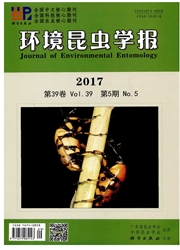

 中文摘要:
中文摘要:
在野外自然条件下采用开顶式生长室模拟增温的方法, 研究了增温对川西北高寒草地3种主要植物(单子叶草本植物垂穗披碱草(Elymus nutans)和双子叶草本植物尼泊尔酸模(Rumex acetosa)和鹅绒委陵菜(Potentilla anserina))的生长及物质分配的影响。研究结果表明, 增温对3种植物的生长产生了显著影响, 垂穗披碱草和尼泊尔酸模的比叶面积和生物量积累在增温后显著增加, 而鹅绒委陵菜在增温后显著减少。在各组分中, 增温处理使尼泊尔酸模的叶生物量显著增加, 根生物量却显著下降, 而鹅绒委陵菜叶和茎的生物量在增温后显著减少, 根生物量却显著增加。增温对尼泊尔酸模各组分的养分含量产生了显著影响, 其中, 根部碳含量在增温后显著增加, 而氮含量在增温后显著减少。增温对尼泊尔酸模和鹅绒委陵菜的生物量在各组分中的分配产生了显著影响, 增温显著增加了尼泊尔酸模的叶重比(LMR)、根重比(RMR)和地下生物量/地上生物量(R/S), 而茎重比(SMR)在增温后却显著降低; 增温显著增加了鹅绒委陵菜的RMR和R/S, 而SMR和LMR在增温后却显著降低。增温对尼泊尔酸模和鹅绒委陵菜各组分中的碳、氮分配产生了显著影响, 增温显著增加了碳、氮在尼泊尔酸模叶片的分配比例, 并且使尼泊尔酸模根部的碳分配比例也显著增加, 而茎部的碳、氮分配比例却显著减少; 增温显著减少了碳在鹅绒委陵菜叶片的分配比例, 而根部的碳、氮分配比例却显著增加。
 英文摘要:
英文摘要:
Aims Plant growth and substance allocation are greatly affected by temperature change, and the response modes have been shown to vary for different functional groups (graminoids and forbs). Our main objective was to assess how experimental warming affects growth in different functional groups and how they adapt to experimental warming by different substance allocation and structural adjustment. Methods We selected three dominant plant species, graminoid Elymus nutans and forbs Rumex acetosa and Potentilla anserina, in an alpine meadow in Northwestern Sichuan, and adapted open-top chambers as passive warming devices to generate an artificially warmed environment. After three years of warming, we measured biomass accumulation and substance allocation of the three species.Important findings Compared to the control, experimental warming significantly increased SLA (specific leaf area) and biomass accumulation of E. nutans and R. acetosa and significantly decreased SLA and biomass accumulation of P. anserine. Warming significantly increased leaf biomass of R. acetosa, but its root biomass significantly decreased; however, warming significantly decreased leaf biomass and stem biomass ofP. anserine and its root biomass significantly increased. Warming significantly increased root C concentration of R. acetosa, but decreased root N concentration. Warming significantly increased the LMR (leaf mass ratio), RMR (root mass ratio) and R/S (shoot/root biomass ratio) of R. acetosa, but its SMR (stem mass ratio) significantly decreased. For P. anserina, wanning significantly increased its RMR and R/S, but its SMR and LMR significantly decreased. Warming significantly increased C and N allocation in leaves of R. acetosa, and also significantly increased C allocation in its roots, but C and N allocations in its stem were significantly decreased. For P. anserina, warming significantly decreased C allocation in its leaves, but C and N allocations in its roots were significantly increased.
 同期刊论文项目
同期刊论文项目
 同项目期刊论文
同项目期刊论文
 Effect of snow depth and snow duration on soil N dynamics and microbial activity in the alpine areas
Effect of snow depth and snow duration on soil N dynamics and microbial activity in the alpine areas 期刊信息
期刊信息
